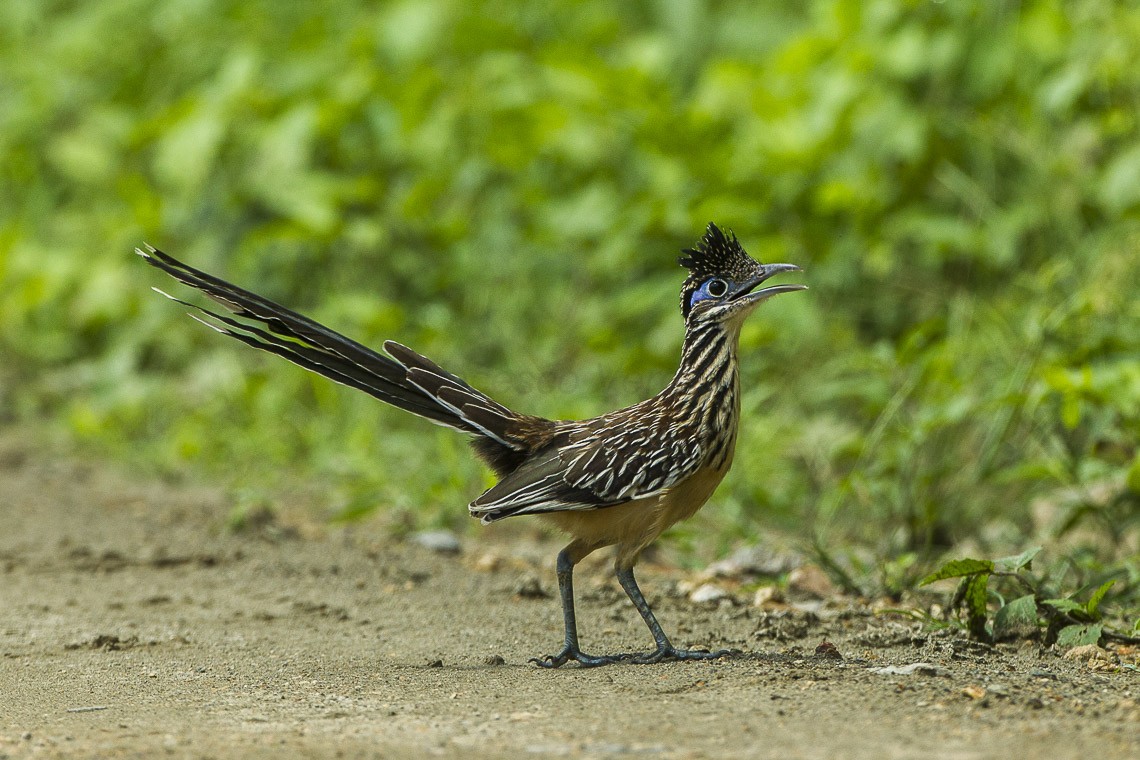Lesser Roadrunner
A species of Roadrunners Scientific name : Geococcyx velox Genus : Roadrunners
Lesser Roadrunner, A species of Roadrunners
Botanical name: Geococcyx velox
Genus: Roadrunners
Content
Description General Info
 Photo By Francesco Veronesi , used under CC-BY-SA-2.0 /Cropped and compressed from original
Photo By Francesco Veronesi , used under CC-BY-SA-2.0 /Cropped and compressed from original Description
The lesser roadrunner is a slender bird that reaches a length of 46 to 51 cm (18 in), the tail itself accounting for about 24 cm. Its average length is 46 cm. The male weighs 174–207 grams, while the female weighs 162–192 grams. The crown, crest and neck of the lesser roadrunner are black with a bronze glow and small light brown spots. The back neck is black-brown, with feathers are lined with a pale brown, so that a brown-white dashes arises. The plumage of the upper body is dark brown with light speckles and lightens to maroon towards the rump, and its breast is white. The rectrices are black with a dark purple luster. Young roadrunners resemble adults, but have ocher-colored lines, and duller skin around the eye. The iris is yellow to brown, with a yellow to silvery-white ring surrounding the pupil. The eye ring is pale lavender to bright blue. The area behind the eye extends to a narrow band that turns into a bright red color on the neck, which is mostly covered by feathers. The upper beak is gray, while the lower beak is bluish-gray. The lesser roadrunner resembles the greater roadrunner (Geococcyx californianus) in appearance and habit but is smaller, with a less streaked throat and chest, brownish on the rump and on the outer wings and yellowish undersides. The lesser roadrunner also has a significantly shorter bill. 
Size
48 cm
Life Expectancy
7-8 years
Nest Placement
Ground
Feeding Habits
Lesser Roadrunner, a versatile predator, primarily consumes large insects, seeds, and fruit. It actively hunts reptiles, amphibians, and scavenges roadkill. Its unique dietary adaptations include quick foraging and agile hunting, often during daylight hours.
Habitat
Arid lowlands, open ground areas, with scrub and thorny bushes, cultivated land 
Dite type
Omnivorous
General Info
Feeding Habits
Bird food type
Behavior
The lesser roadrunner can run up to 20 miles per hour (32 km per hour). It spends most of its time on the ground, running in open areas, along roads or under cover. and is capable of limited flight, perching in bushes or low trees. Roadrunners bask in the early morning, on a fence post or bush. They cock their tail and droop their wings, then turn their back towards the sun, raising the scapular feathers and exposing their black skin which absorbs heat. They may preen themselves as well. The bird's call is a series of soft "cooing", about one note per second, made three to seven times on a descending scale. 
Species Status
Not globally threatened.
Scientific Classification
Phylum
Chordates Class
Birds Order
Cuckoos and Relatives Family
Cuckoos Genus
Roadrunners Species
Lesser Roadrunner